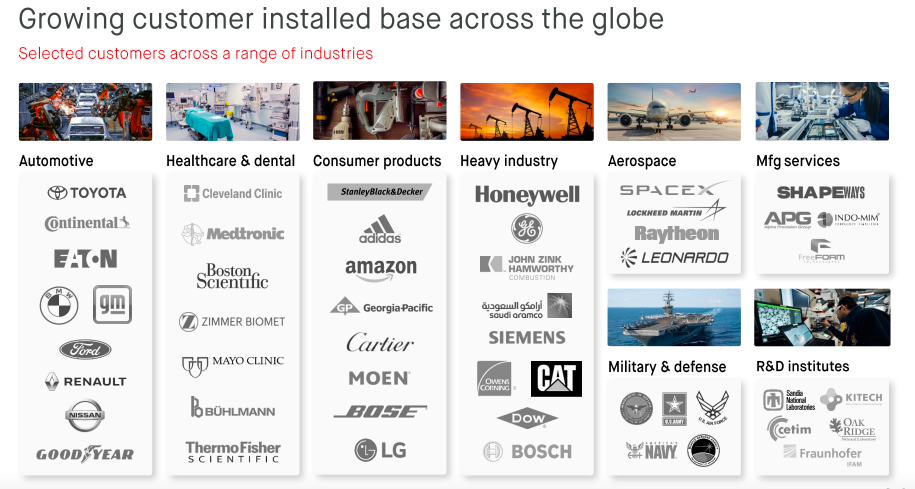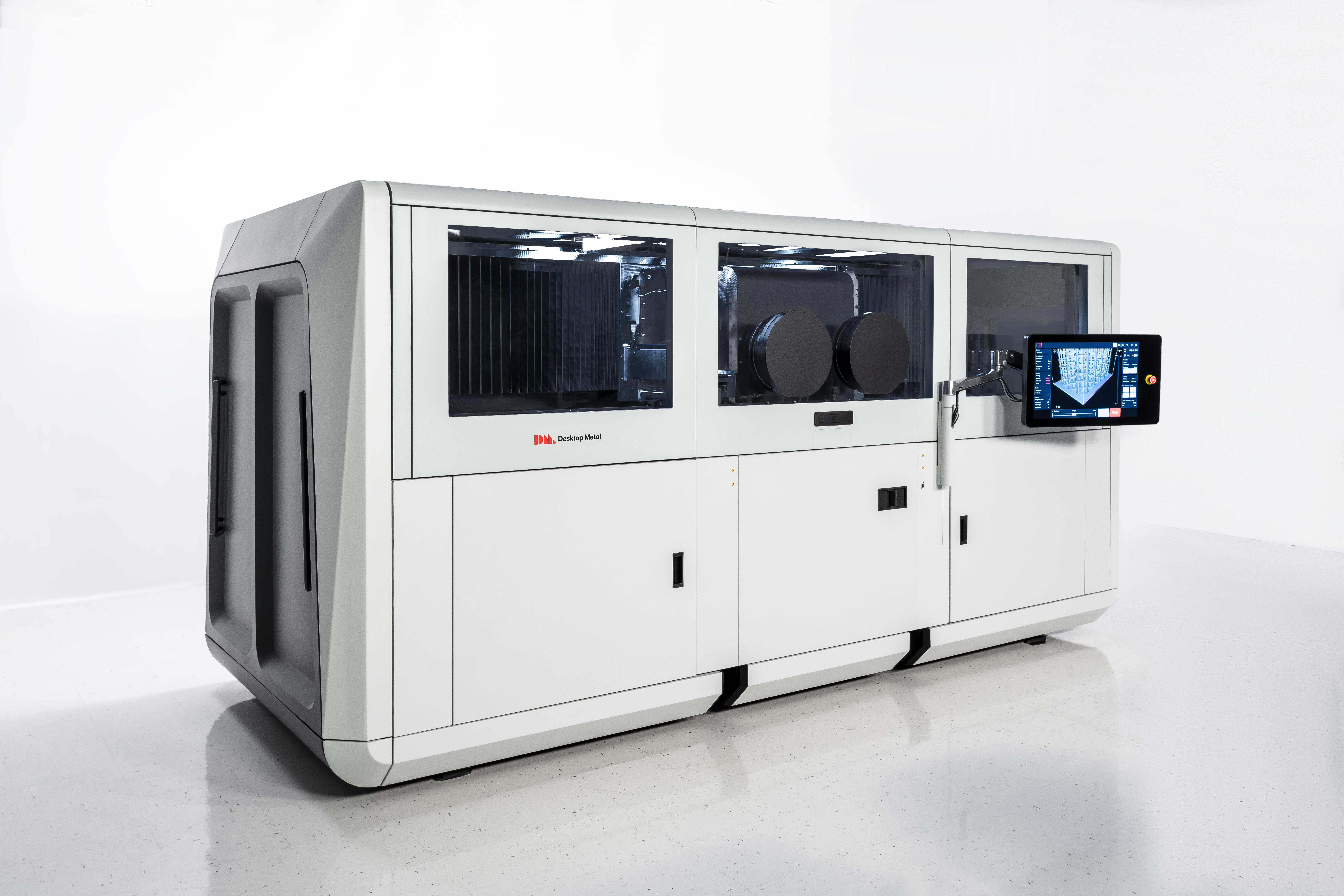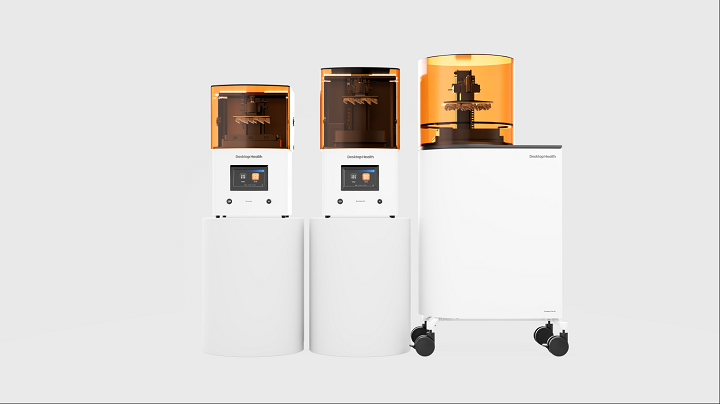While Desktop Metal (NYSE: DM) has a market cap of $1.25 billion, reflected in the unicorn status it was given by investors ahead of its initial public offering, its ability to generate organic revenue has worried some analysts. Due to a slow commercialization process for its Production metal binder jetting systems, the valuation seems to be surprisingly high. For that reason, each quarterly financial report is an indicator of whether the company is on the right track to fulfilling its image as a leading metal 3D printing company.
Of particular importance is its latest report, detailing Desktop Metal’s finances for Y2021. And the report was promising, indicating strong revenues, both organic and inorganic. For the full year, revenue was up a whopping 583% from 2020 at $112.4 million. Organic revenue was up 163%. For the fourth quarter alone, revenue was up 123% from the third quarter of 2021 and 62% year-on-year at $56.7 million, not including revenue from the ExOne acquisition. The GAAP gross margin for Q4 were 22 percent, the sixth straight quarter of gross margin growth.
Unfortunately, despite all of this, Desktop Metal did not turn a profit. Instead, it reported $71.2 million in losses for Q4 and $240.3 million across the entire year. This breaks down into losses of $0.92 per share or over four times the $0.22-per-share loss it experienced in 2020. Naturally, the company didn’t highlight these losses, but instead underscored the organic gains. With this information in mind, the company initiated full-year guidance of $260 million for 2022, a projected 131 percent growth from 2021. And because Desktop Metal beat analyst sales projections, DM stock jumped 14.7 percent, as of this writing.
“With record total revenue, organic revenue, and gross margins, the fourth quarter was an exceptional finish to a revolutionary year for Desktop Metal. We also recently commenced shipments of our flagship Production System P-50, a major milestone for Desktop Metal and the additive manufacturing industry,” said Ric Fulop, CEO and co-founder of Desktop Metal. “In addition to the team’s achievement on P-50, we’re entering 2022 with considerable tailwinds toward another year of record growth including continued momentum from the best quarter in company history, robust customer demand across our unmatched AM 2.0 solutions portfolio, and favorable market conditions as the additive market inflects. We believe our strategic priorities in 2022 will ensure continued success toward achieving our goal of double digit share of the over $100 billion additive manufacturing market by the end of the decade.”
The company was extremely active over the course of the year, with its EnvisionTEC purchase, now called ETEC, powering the release of its Einstein medical and dental 3D printers for Desktop Health. Desktop Health also launched its Flexcera Smile Ultra+ hybrid ceramic resin for permanent restorations. It released a number of materials over the course of the year, including HH stainless steel and pure copper for the Production System, as well as D2 tool steel for the Studio System 2. Most recently, it shipped a P-50 Production System to its first customer, Stanley Black & Decker. And it unveiled the X-Series line of ExOne-derived metal binder jet 3D printers.
It’s promising that organic revenues increased and it’s likely that, once ExOne revenues are taken into account, it will look like a healthier firm that is burning less cash. Regardless, the ExOne acquisition may have brought in the expertise necessary to get the P-50 into the end zone. Moreover, given the lag in introducing Single Pass Jetting machines to market, it should give Desktop Metal the inventory and production capacity to make machines as it scales up the manufacturing of Single Pass Jetting systems.
Subscribe to Our Email Newsletter
Stay up-to-date on all the latest news from the 3D printing industry and receive information and offers from third party vendors.
You May Also Like
3D Printing News Briefs, April 20, 2024: Manufacturing 4.0 Consortium, Blow Molding, & More
We’re starting with news about a manufacturing consortium in today’s 3D Printing News Briefs, as OPEN MIND Technologies has joined the Georgia Tech Manufacturing 4.0 Consortium. Moving on, industrial machining...
Meltio and Accufacture Unveil Robotic Metal 3D Printer Made in the US
Meltio has partnered with Michigan-based robotics firm Accufacture to introduce Alchemist 1, a robotic cell designed for wire-laser metal 3D printing made in the US. This new system represents a...
3D Printing News Briefs, April 13, 2024: Robotics, Orthotics, & Hypersonics
In 3D Printing News Briefs today, we’re focusing first on robotics, as Carnegie Mellon University’s new Robotics Innovation Center will house several community outreach programs, and Ugogo3D is now working...
Rail Giant Alstom Saves $15M with 3D Printing Automation Software 3D Spark
3D Spark has entered into a three-year deal with the rail giant Alstom. Alstom, a transport behemoth with annual revenues of $16 billion, specializes in the manufacture of trains, trams,...


































